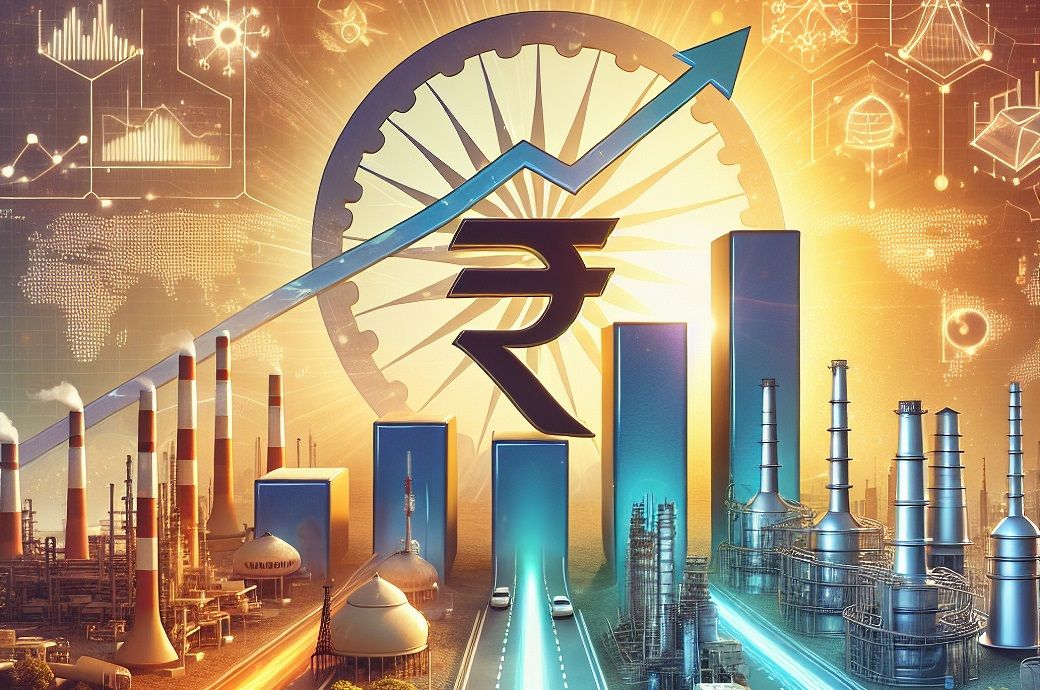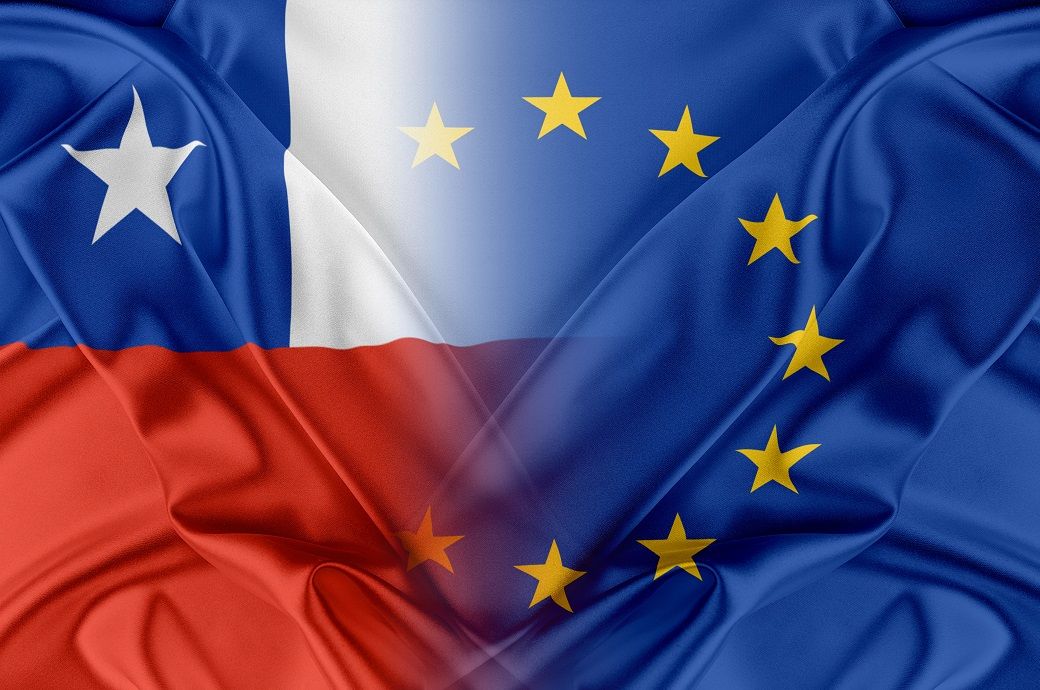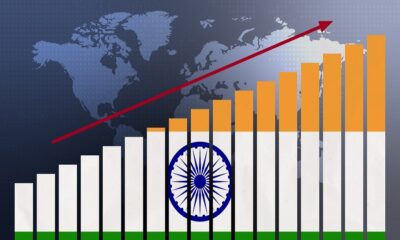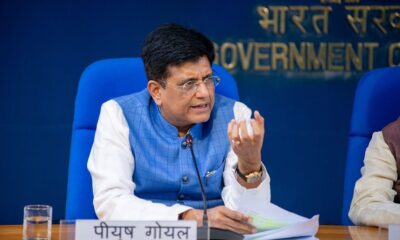Fashion
Fitch keeps India at ‘BBB-‘, projects 6.5% growth in FY26

Fitch said a strengthening record of delivering growth with macro stability and improving fiscal credibility should steadily lift structural metrics, including GDP per capita, while increasing the likelihood of a modest downward trend in debt over the medium term.
Fitch Ratings has affirmed India’s Long-Term Foreign-Currency IDR rating at BBB- with stable outlook, citing strong growth and external finances but high deficits and debt as weaknesses.
GDP is forecast to grow 6.5 per cent in FY26, inflation is contained, and reserves stand at $695 billion.
Risks include US tariff uncertainty, while sustained fiscal consolidation could aid an upgrade.
It projects GDP growth at 6.5 per cent in FY26, unchanged from FY25 and well above the BBB median of 2.5 per cent, supported by strong public capex and resilient consumption. Nominal GDP growth, however, is forecast to slow to 9 per cent in FY26, from 12 per cent in FY24, Fitch said in a press release.
A proposed 50 per cent US tariff on India poses a downside risk, though Fitch expects this to be negotiated lower. While exports to the US represent just 2 per cent of GDP, prolonged tariff uncertainty could dampen sentiment and reduce India’s competitiveness in supply chain shifts away from China.
Inflation remains contained, with headline inflation falling to 1.6 per cent in July 2025 on easing food prices and core inflation steady at around 4 per cent. Following a 100 basis points cut in the repo rate to 5.5 per cent, it sees scope for one more 25bp cut in 2025. Credit growth, which slowed to 9 per cent in May from 19.8 per cent a year earlier, is expected to recover under the easing cycle.
On the fiscal side, the central government deficit narrowed to 4.8 per cent of GDP in FY25 and is forecast at 4.4 per cent in FY26, in line with the medium-term target. The broader general government deficit is projected to fall from 7.8 per cent in FY25 to 7.3 per cent in FY26 and 7 per cent by FY28, while state deficits are expected to stabilise at 2.9 per cent from FY26.
India’s debt burden remains high at 80.9 per cent of GDP in FY25, set to edge up to 81.5 per cent in FY26 before gradually declining to 78.5 per cent by FY30, though Fitch cautions this path relies on nominal growth staying above 10 per cent. The interest-to-revenue ratio, at 23.5 per cent versus the BBB median of 9 per cent, continues to constrain fiscal flexibility.
India’s external position remains a key strength, with foreign exchange reserves rising to $695 billion by mid-August 2025, equivalent to eight months of external payments. The current account deficit is projected at 0.7 per cent of GDP in FY26, rising gradually to 1.5 per cent by FY28, added the release.
Governance continues to weigh on ratings, with India ranking below the median on World Bank indicators, but Fitch’s ESG relevance scores of ‘5’ for political stability and rights and ‘5[+]’ for rule of law and institutional quality reflect both resilience and challenges.
Fitch noted that an upgrade could follow stronger fiscal consolidation and a sustained revival in private investment-led growth, while weaker growth or rising debt burdens could trigger a downgrade.
Fibre2Fashion News Desk (SG)
Fashion
ITA to continue till Advanced Framework Agreement ratified: EU, Chile

A review of the trade and sustainable development provisions of the ITA is under way.
EU high representative for foreign affairs and security policy Kaja Kallas recently met Chilean Minister of Foreign Affairs Alberto van Klaveren. Both co-chaired the first EU-Chile Joint Council under the Advanced Framework Agreement in Brussels.
The EU and Chile are committed to deepening their trade and investment relations under the Interim Trade Agreement, which came into force on February 1 and will remain in force until the new Advanced Framework Agreement has been fully ratified.
Both sides will continue to cooperate on ensuring reliable and sustainable supply chains, including through diversification and support to strategic investments.
The first EU-Chile Trade Council meeting was held under the new ITA, according to an EU release.
The EU is Chile’s third-largest trade partner and the top source of foreign direct investment (FDI).
Both sides will continue to cooperate on ensuring reliable and sustainable supply chains, including through diversification and support to strategic investments, a joint statement issued said.
Chile welcomed the interest of the EU in establishing a dialogue with the member countries of the Comprehensive and Progressive Agreement for Trans-Pacific Partnership (CPTPP). Both parties affirm their ambition to translate this dialogue into a shared agenda.
Both sides remain committed to ensuring the effective implementation of the Advanced Framework Agreement, and to achieving its full ratification.
The provisional application of the EU-Chile Advanced Framework Agreement began on June 1, 2025.
Fibre2Fashion News Desk (DS)
Fashion
Chanel debuts A$AP Rocky as ambassador, with Margaret Qualley teaser video

Published
November 30, 2025
Chanel has appointed A$AP Rocky as a new brand ambassador and debuted his tenure with a teaser video shot in New York co-starring Margaret Qualley.
The video appeared Sunday just 48 hours before Chanel’s couturier Michel Blazy will stage his debut collection of Métiers d’Art also in New York. It’s a unique line first created by Karl Lagerfeld that highlights the unique stable of artisans Chanel has assembled in such skills as embroidery, pleating, glove-making and costume jewelry.
Directed by Michel Gondry, the 2.49-minute short opens with the stars waking up in the bed of a walkup apartment in Williamsburg. Where, after a quick peck on her lover’s forehead, Qualley disappears into a tiny bathroom, before magically changing out of her blue nightie and reappearing in a red, white and blue houndstooth Chanel jacket, paired with pale blue pants, her hair in a chignon.
https://www.youtube.com/watch?v=live
No sooner than she has disappeared, than A$AP leaps out of bed and descends the tenement building’s outside steel stairs and sets off on a mad dash after Qualley. This leads to him swimming under the Brooklyn Bridge, and running north through the Lower East Side, before finally catching up with Qualley at Astor Place station. All the action backed up my moody ambient music courtesy of Le Motel.
In between, the rapper and husband of Rihanna, manages to find time to stop in two discount stores to acquire pants and a blazer. Arriving just in time, to genuflect onto one knee, and hold out a small white Chanel box, containing one assumes a diamond engagement ring, at the station entrance. The sight of which leads the actress to leap into the air in paroxysm of joy, before the happy couple march arm and arm back into the subway.
And off one assumes to attend the Métiers d’Art show, which will be revealed on Tuesday, 8 p.m. NYC time.
Copyright © 2025 FashionNetwork.com All rights reserved.
Fashion
Canada’s Lululemon revamps commercial strategy with new global leader

Ms. Burgoyne joined lululemon in 2006 and became the company’s first President in 2020. Throughout her tenure, she has assumed roles of increasing responsibility and led the North America business through periods of rapid growth and expansion.
Lululemon Athletica has announced that Celeste Burgoyne, president of the Americas and global guest innovation, will leave at the end of December 2025 after 19 years with the brand.
The company will consolidate regional leadership and has appointed André Maestrini as president and chief commercial officer, giving him global oversight of stores, regions, digital channels and commercial strategy.
“We are grateful for Celeste’s leadership and significant contributions to lululemon’s business and culture over the past 19 years. She has been instrumental in growing our footprint in the Americas, creating high-quality guest experiences, and mentoring our teams across the organization,” said Calvin McDonald, Chief Executive Officer, lululemon. “I deeply appreciate her partnership and friendship, and we wish her all the best in the future.”
“My time at lululemon has been both inspiring and rewarding beyond belief,” said Ms. Burgoyne. “I am so proud of what we have accomplished as an organization since I joined in 2006 and know the team will take the company to even greater heights in the years to come. I look forward to continuing to support the brand as a lifelong fan.”
In conjunction with this announcement, lululemon has made the decision to consolidate regional leadership across the company and appoint André Maestrini as President and Chief Commercial Officer, effective immediately. Mr. Maestrini will continue to report directly to Mr. McDonald.
In this newly created role, Mr. Maestrini will provide integrated oversight of all of lululemon’s regions, stores, and digital channels globally. He will also oversee lululemon’s global commercial strategy with a focus on continued market expansion, revenue generation, and accelerating best practice sharing, across all regions including North America.
Mr. Maestrini joined lululemon in 2021 as Executive Vice President of International. In his current role, he has overseen lululemon’s operations in EMEA, APAC, and China Mainland, and has helped to more than quadruple lululemon’s international revenues.
“André has demonstrated a proven ability to unlock opportunities, advance our global expansion, and deliver growth across multiple markets,” said Mr. McDonald. “Leveraging operational discipline, deep guest insights, and extensive brand-building experience, André is the ideal person to lead our business across all markets, including North America, as we remain focused on delivering value for our guests, employees, and shareholders.”
Before joining lululemon, Mr. Maestrini spent 14 years at adidas in various senior roles across the globe. During this time, he served in a number of General Manager positions where he helped grow the company’s global sports categories and regional markets. Prior to adidas, Mr. Maestrini held marketing roles at The Coca-Cola Company, Danone, and Kraft Jacobs Suchard.
Note: The headline, insights, and image of this press release may have been refined by the Fibre2Fashion staff; the rest of the content remains unchanged.
Fibre2Fashion News Desk (RM)
-

 Sports7 days ago
Sports7 days agoWATCH: Ronaldo scores spectacular bicycle kick
-

 Entertainment7 days ago
Entertainment7 days agoWelcome to Derry’ episode 5 delivers shocking twist
-

 Politics7 days ago
Politics7 days agoWashington and Kyiv Stress Any Peace Deal Must Fully Respect Ukraine’s Sovereignty
-

 Business1 week ago
Business1 week agoKey economic data and trends that will shape Rachel Reeves’ Budget
-

 Tech5 days ago
Tech5 days agoWake Up—the Best Black Friday Mattress Sales Are Here
-

 Fashion7 days ago
Fashion7 days agoCanada’s Lululemon unveils team Canada kit for Milano Cortina 2026
-

 Tech5 days ago
Tech5 days agoThe Alienware Aurora Gaming Desktop Punches Above Its Weight
-

 Politics1 week ago
Politics1 week ago53,000 Sikhs vote in Ottawa Khalistan Referendum amid Carney-Modi trade talks scrutiny

















